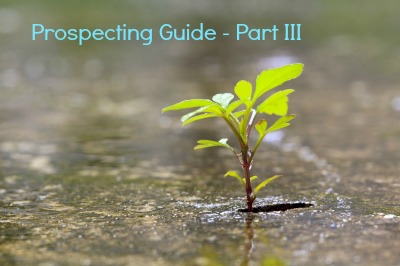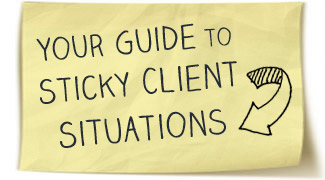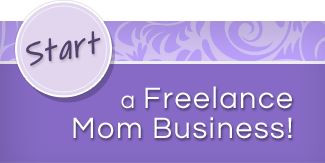
Imagine you’ve identified a perfect market, sent out your perfect cold sales letter, and gotten the perfect response:
We did receive your note. I would be interested in talking to you. I am in today and most of the week if you would like to talk.
Your prospect wants to talk to you! And soon!
When you call, you find the situation is even better than you could have hoped. She is definitely interested in your services, but she has also been recently mistreated (and more than once) by the small firm that currently handles a number of related services she wants to talk to you about!
Jazzed about all this great work that is coming your way, you:
- connect with a fellow self-employed woman to share strengths and split the work so you can each put in less time when needed. Your colleague reaches out to a third person for a skillset that neither of you have.
- set an in-person meeting, research the company and their competition to death, make a PowerPoint and don a professional outfit.
- regal them with stats about the gap between their business and the competitor and how you can quickly and easily close it. You field questions about how long it takes to see results with ease.
The meeting goes on for 4+ hours including lunch. You click!
You go home to start working on the proposal with your collaborator and excitedly send it off. Then the response comes:
Thank you for your outline which was very complete.
I liked a lot of your ideas but I cannot afford such a complex package.
In addition, the expense of all this is way too much so I am trying to cut back and your packages are more than I can afford.I am in the middle of finding my way after leaving my old service provider.
In your first interview, you determined approximately how much they spent with their previous service provider. When you inquired about budget, the prospect told you to create a proposal and you’d discuss it later.
Where did you go wrong?
The Single Most Time (and life) saving Step in Prospecting
Without a system set up before leads start coming in, separating the wheat from the chaff, the perennial requesters from the ready-to-signers, and the low ballers from the serious propositions can take up all your time.
Rather than work on client projects or pursue new places to generate leads, you’ll be stuck preparing proposals for prospects that never pan out.
This is highly customized to your business, and should center around what you look for in a client (here’s a guide to figuring that out).
The Three Things You Must DO
- Make sure they have the need you solve. If they don’t clearly have a need, they’re just fishing. Which is fine. But means you should expend far less energy than on a hot prospect.
- Assess whether the need is urgent. If they do have a need, but it’s not urgent, they have no reason to spend money now. You’ll get so tired of following up with them that you might not even be interested in working with them anymore by the time they’re actually ready to go.
- Try to ascertain if they have the means to pay your rates. If they can’t pay your rates, but you spend too much time with them, you run the risk of getting “knocked up by a sleazebag,” as Carol Tice puts it hilariously, getting sucked into a project that all the way in to a project before finding out that the rate does not meet your standards.
Depending on your line of business, the first step is usually much easier than the third, or visa versa.
Executive business coach? It’s easy to find out if prospects can pay your rates but much harder to tell if they have a coach already.
PR consultant? You can easily see if the company has good media placement and releases regular press releases, but it’s harder to determine if they have a budget for PR that can accommodate your services.
In the case of the seemingly excited client in the beginning of the most, though the client probably had the means to pay your rates, as you ascertained through your research, for some reason, her need wasn’t urgent enough to keep spending the funds she had allotted to her previous service provider.
How Do You Actually Figure Out These Prospect Details?
How well you qualifying prospects is completely dependent on how much information you have.
1. The Need
This is usually the easiest aspect to qualify if you get a phone meeting with the prospect. Start by asking them to tell you about their business (or life if you services are aimed at individuals instead of business owners). It can sometimes take a few questions, but usually whatever is bothering them, whatever is the need they need filled, will surface quickly. (Sometimes you won’t be able to get them to stop talking about it!)
2. Urgency
Urgency is one of the hardest qualities to qualify. It’s easy to say that a lead is urgent if they have reached out to you to fill a need, but even that’s not always the case. Ask your prospect when they need to implement your service or project, as well as how it interacts with other projects to see what might put your deal on hold or make it a high-priority for your prospect.
3. Means
Simply asking, “what’s your budget for this?” is both passive and direct. You don’t suggest a figure or ask what they’re willing to pay, but you come right out and ask the question. However, there are two schools of thought on this approach. If you don’t know their budget, you may quote a number that ends negotiations cold. But sometimes, they’d be fine with a higher number, but won’t tell you that up front and you’ll leave money on the table by quoting within their range.
How Do You Know If a Prospect is a Good Fit for You?
You’ve found this prospect by looking in the market you’ve determined as the best place to find your ideal client.
You’ve checked for need, urgency, and means.
It’s a match made in heaven, right?
All cats have fur, but not everything that has fur is a cat, as the saying goes.
Just because the prospect checks all the main boxes doesn’t always mean you’re a great match; just that you can probably make a deal.
If you’re at a point in your freelancing or small business career that you want to make sure your clients fit you in more intangible, relational ways, use our 5-Step Plan for Better Clients to create a more personalized list for qualifying clients.





